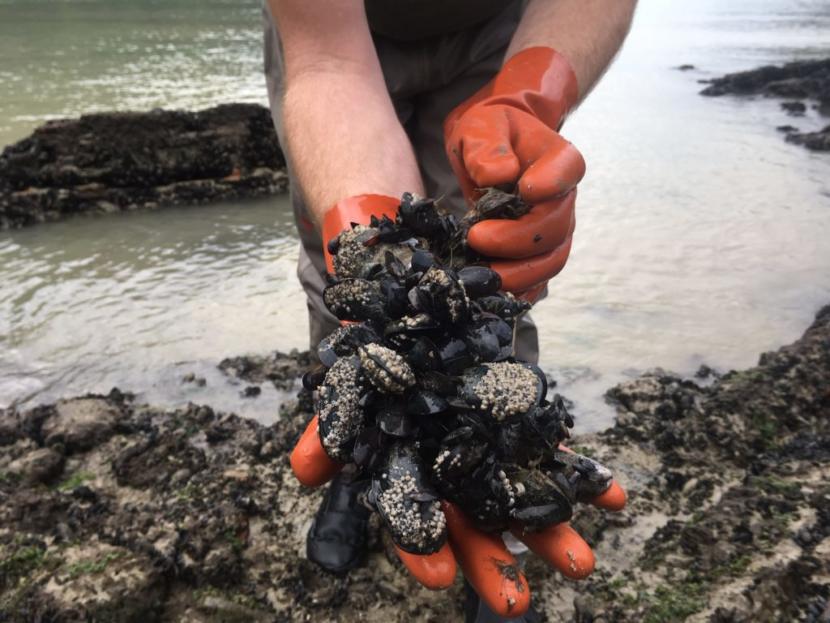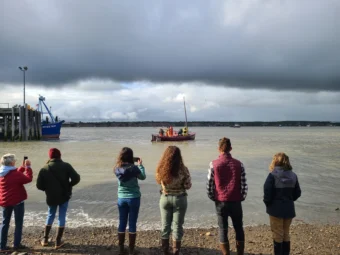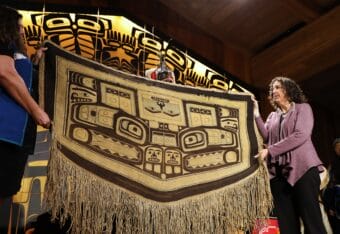
Alaska is well known for its seafood — halibut, cod and salmon destined for the dinner table. But there’s one seafood product that you don’t want to eat. And it may have been harvested for the CIA: a lethal toxin used as an alternative to cyanide.
In May 1960, Francis Gary Powers’ U-2 spy plane was shot down over the Soviet Union during a high-altitude reconnaissance mission. In his pocket was a modified silver dollar containing a hidden needle loaded with a lethal dose of shellfish toxin.
At the Kodiak Area Marine Science Symposium, oceanography Patricia Tester said she might know where the poison, known as saxitoxin, came from.
Saxitoxin causes paralytic shellfish poisoning. It paralyzes muscles by interfering with signals from the body, which can stop respiration.
Tester says she learned about saxitoxin experiments from a trove of documents found in Kodiak that revealed tests on mice in the 1950s involving shellfish toxins. The research was conducted in a facility in Ketchikan that no longer exists.
The documents Tester reviewed include a contract for clams and a shipping receipt to the U.S. Army Biological Warfare Laboratories at Fort Detrick in Maryland.
“In one of the files, there was a Department of Defense contract for toxic shellfish,” she said. “And this is what led to the detective journey that brought us through the Cold War history. The contract was from the Department of Defense and it was for toxic clams written in Oct. 6, 1952.”
The contract was for $10,000 of toxic clams — closer to $100,000 today — to be shipped to the East Coast.
“The department worked with the CIA to actually develop a replacement for the cyanide poison pill that was provided to US covert agents and spies during that time,” Tester said.
Cold War enthusiasts might remember that, under Nixon’s orders, the United States destroyed its stockpile of biological weapons in 1969. But in practice, the CIA interpreted the instructions liberally. During a 1975 congressional committee investigation, the CIA admitted it had kept a small stockpile of saxitoxin. And this was the same saxitoxin that Powers carried on his flight over the USSR.
Tester says it is possible to save somebody who has acute saxitoxin poisoning by putting them on a respirator and giving the toxin time to work its way out of the body. But the amount carried in Powers’ needle would likely be lethal within minutes.
The document Tester found doesn’t determine definitively that Powers carried saxitoxin from Alaska, but Tester says that her research indicates that it’s likely.
“There could have been another order, either earlier or later than the one I found,” she said. “There could have been orders for toxic clams off the East Coast, which happened as well, I think for the first time down in the Woods Hole area in the Massachusetts area about 1972. But that would have been, you know, pretty late in the game for them to have been doing anything like that.”
Powers never used the poison. He was captured after ejecting from his plane and ultimately returned to the United States in a prisoner exchange about two years later.
No other cases of operational use of saxitoxin by the CIA have come to light.



